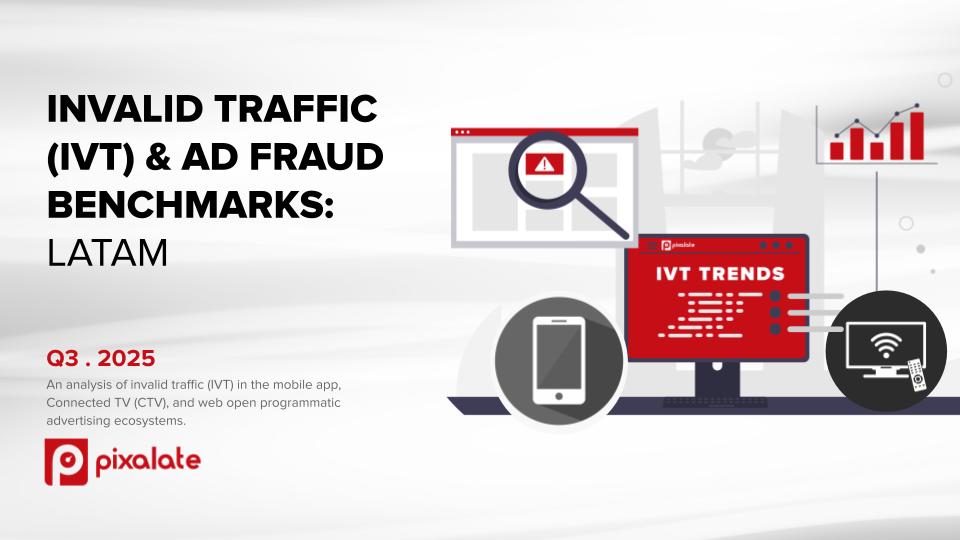Pixalate's Q3 2020 State of Connected TV/OTT: Ad Supply Trends Report details how the programmatic OTT/CTV advertising marketplace changed from Q1 2020 to Q3 2020.
This blog post examines OTT/CTV U.S. household penetration by reviewing the percentage of U.S. households reachable via programmatic advertising on OTT/CTV devices on a quarter-by-quarter basis.
72% of US households are reachable by programmatic OTT/CTV in Q3 2020 — an increase of 44% compared to Q4 2019

- Q4 2019: Half (50%) of U.S. households are reachable via programmatic advertising on OTT/CTV devices
- Q1 2020: 59% of households are reachable, an 18% quarter-over-quarter increase
- Q2 2020: 64% of households are reachable, an 8% QoQ increase
- Q3 2020: 72% of households are reachable, a 13% QoQ increase and a 44% increase compared to Q4 2019
What's inside the report
Pixalate's State of Connected TV/OTT: Ad Supply Trends Q3 2020 Report includes:
- Global and regional OTT/CTV ad spend trends
- Programmatic ad market share by device and operating system
- Top OTT/CTV apps and platforms
- Roku and Amazon Fire TV app store trends
- Invalid Traffic (IVT) rates
Download a free copy of the State of Connected TV/OTT: Ad Supply Trends Q3 2020 Report today.

Disclaimer
The content of this blog post, and the State of Connected TV/OTT: Ad Supply Trends Q3 2020 Report (the "Report"), reflect Pixalate's opinions with respect to factors that Pixalate believes can be useful to the digital media industry. Pixalate's datasets — which are used exclusively to derive these insights — consist predominantly of open auction programmatic traffic sources. Any insights shared are grounded in Pixalate's proprietary technology and analytics, which Pixalate is continuously evaluating and updating. Any references to outside sources in the Report and herein should not be construed as endorsements. Pixalate's opinions are just that, opinions, which means that they are neither facts nor guarantees.








